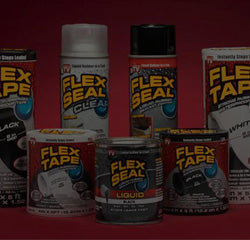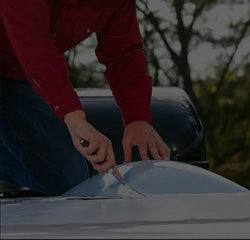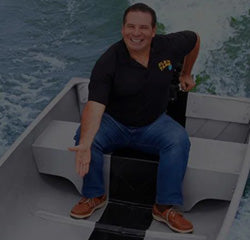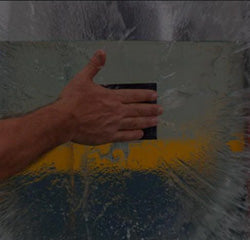How To Prepare for a Flood
This blog was written by Flex Seal in collaboration with Flex Seal Ambassadors, Dr. Reed Timmer and Mark Simpson.
It’s essential to know how to prepare for a flood now more than ever given the alarming increase in flooding worldwide.
“We’ve seen a large increase in flooding over the last few decades, and that threat is only growing larger,” said Extreme Meteorologist and Storm Chaser, Dr. Reed Timmer. “The time to prepare for these disasters is now.”

Although we cannot stop floods from happening, we can increase our levels of flood preparedness to help protect our family and property to the best of our ability. Read on to learn 5 tips on how to prepare for a flood.
1. Know Your Risk

According to Dr. Timmer, flooding is possible just about anywhere. However, some locations can be more susceptible than others. Coastal regions, such as beach communities, floodplains and areas with poor drainage are some examples of places that may experience flooding more frequently.
“Whenever possible, it’s better to be prepared than to be caught off guard by a flooding situation and knowing your flood risk is a great first step towards flood preparedness,” said Dr. Timmer.
2. Have a Plan

Planning is key when it comes to protecting your home and family from flooding, which is why it’s crucial to have your flood preparedness plan in place before flooding strikes.
“You have to think these things through when you have time, rather than when you have only a few hours’ notice to get out,” said Extreme Scientist and Storm Chaser Mark Simpson. “You don’t want to be figuring out what to do when flooding is already on its way because it’s too late by then.”
Communication is key. Your family should discuss everything from medical needs to evacuation plans to home preparation. Everyone in your home should understand your flood preparedness plan so that there is no confusion if you find yourself in a flooding situation.
Some questions to figure out with your family as you develop your flood preparedness plan:
• How do we plan to communicate as a family?
• Do we have the proper equipment to stay informed during emergency flood alerts?
• Where should our emergency meeting places be?
• What is our shelter and evacuation plan, including an evacuation route?
• What do we need in our flood safety kit?
• How can we keep our home from flooding if we have time to prepare?

“If you create a plan well in advance, you and your family will be in a better situation because you already know what to do,” Simpson said.
Simpson also advises you to practice your plan as a family and regularly set aside time to review your plan.
3. Build a Flood Safety Kit

Having the proper supplies on hand is an essential part of preparing for a flood.
“It’s very important to put together a flood safety kit ahead of time so that if a situation calls for an evacuation, you can do so quickly and safely,” said Timmer. “When you’re evacuating a flood zone, there may be heavy rain and stormy conditions, so I recommend packing items that can protect you from those elements and keeping them stored inside of a waterproof bag. You’re going to want to keep this bag in an easily accessible place, so you can grab it and go in the event of an evacuation.”
Dr. Timmer suggests at minimum, the below items for a flood safety kit should include:
• Important documents such as ID cards, proof of insurance, property deeds, etc.
• Prescription medicines and medical devices like oxygen or CPAP machines
• Non-perishable food
• Bottled water and water purification tablets
• Flashlights
• Batteries
• Weather radio
• Portable chargers
• Extra clothing and different layers
• Rain jacket
• Hand warmers
• Flares
• 2-way radios
Note: This is not an exhaustive list. It is important to think of the specific needs of you and your family when putting together your flood safety kit.
4. Stay Informed

It’s important to check local news and weather reports to be aware of any potential storms or weather advisories for your area. If you lose power due to a storm, a weather radio makes it possible for you to receive ongoing weather updates and essential information.
“Knowledge can save lives” Timmer said. “Staying up to date with local weather reports can keep you informed of any potential flooding threats in your area and allow you to take the appropriate actions.”
5. Secure Your Home

If floodwaters enter your home or business, they can cause extensive damage, leading to costly repairs.
“One of the most essential parts of any flood preparedness plan is to protect your property from dangerous floodwaters,” said Dr. Timmer. “If you’re able to prepare ahead of time for a flood, I highly recommend applying Flex Seal Flood Protection Products to secure your home and help keep the inside of your property dry. These products are just like the original Flex Seal products except they are removable and specifically designed to help stop flood waters from entering a building. These are an absolute game-changer when it comes to flood protection. But it’s very important to understand and follow all the directions and “how-to’s” in order to achieve the best flood water protection outcome.”
The Flex Seal Flood Protection line can be applied to vulnerable areas of your home or business such as entryways, windows, cracks, garage doors and more, to help slow or even stop the entry of water into your property. All structures are different, and depending on age and type of construction, it’s impossible to stop all flood waters from entering 100% of the time, but Flex Seal Flood Protection can help.

You may not be able to prepare for every flood, but when you can, Flex Seal Flood Protection is here to help you protect what matters most.







































